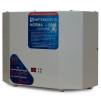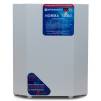How to choose a voltage stabilizer?
How to Choose a Voltage Stabilizer
1. Why It Matters
Voltage in power grids can deviate significantly from the norm. As a result, electrical equipment operates under critical conditions, overheats, wears out faster, and eventually fails.
2. Functions of a Stabilizer
A stabilizer is designed to:
- regulate voltage and keep it within acceptable limits;
- protect equipment from voltage surges;
- smooth out impulse noise and distortions.
This is especially important when using hybrid solar inverters. By stabilizing the input voltage, the stabilizer reduces unnecessary switching of the inverter to battery mode. This helps save battery charge-discharge cycles and allows the inverter to operate in a more efficient and less stressful mode.
3. Where to Install a Stabilizer
A stabilizer can be used: for the entire facility — powerful devices that protect the overall grid, usually with lower accuracy; for individual equipment — high-precision models or uninterruptible power supply (UPS) systems that safeguard the most sensitive devices.
4. Combined Protection
The most effective approach is often a combination: a general stabilizer for the whole facility, plus additional precise stabilizers or UPS units for critical equipment.















